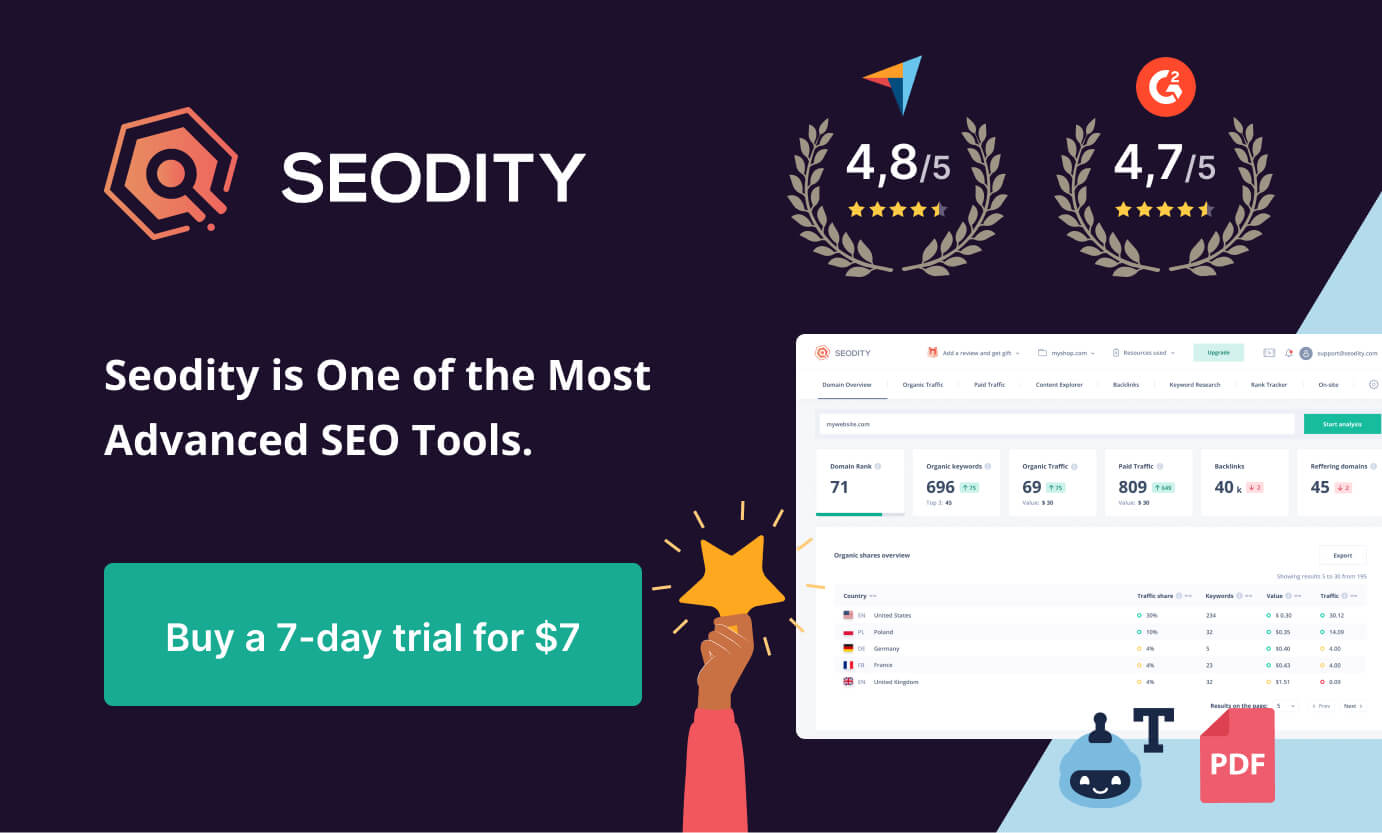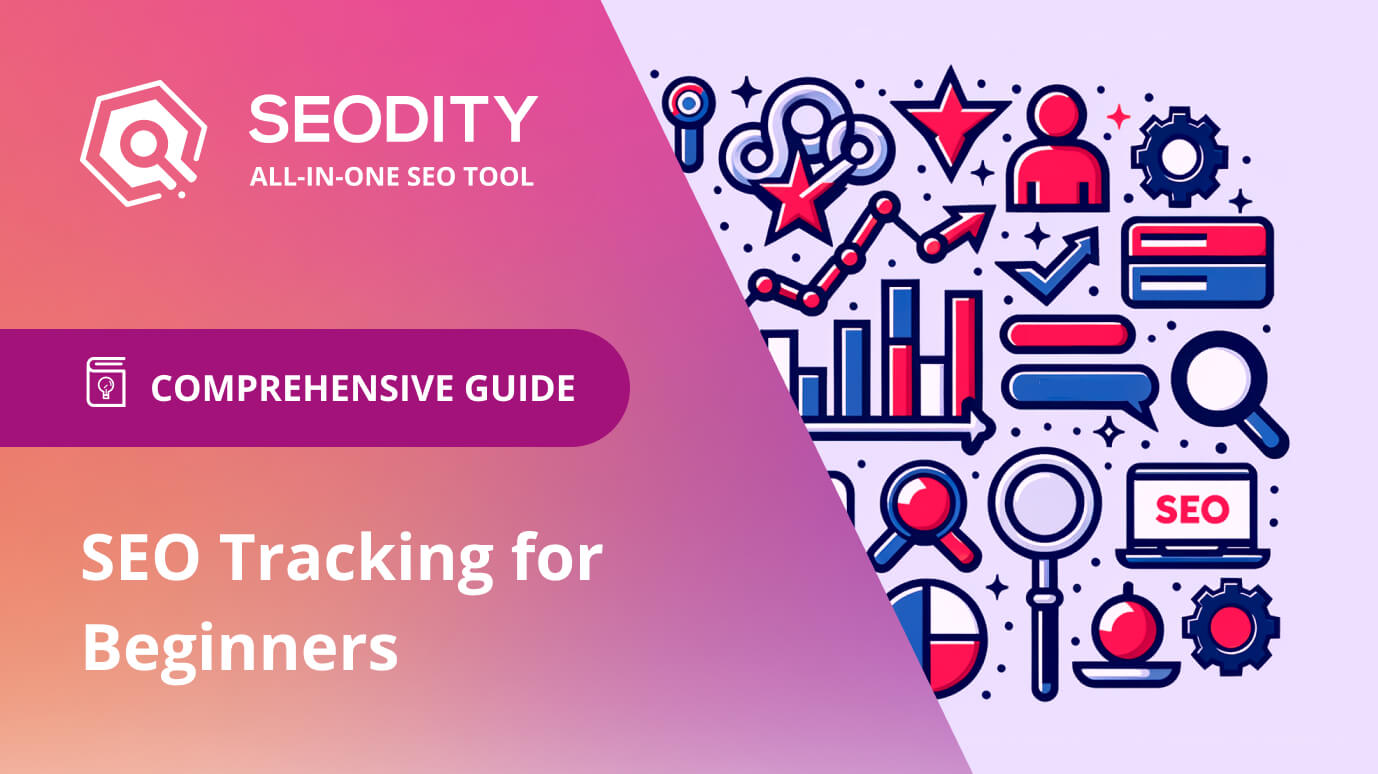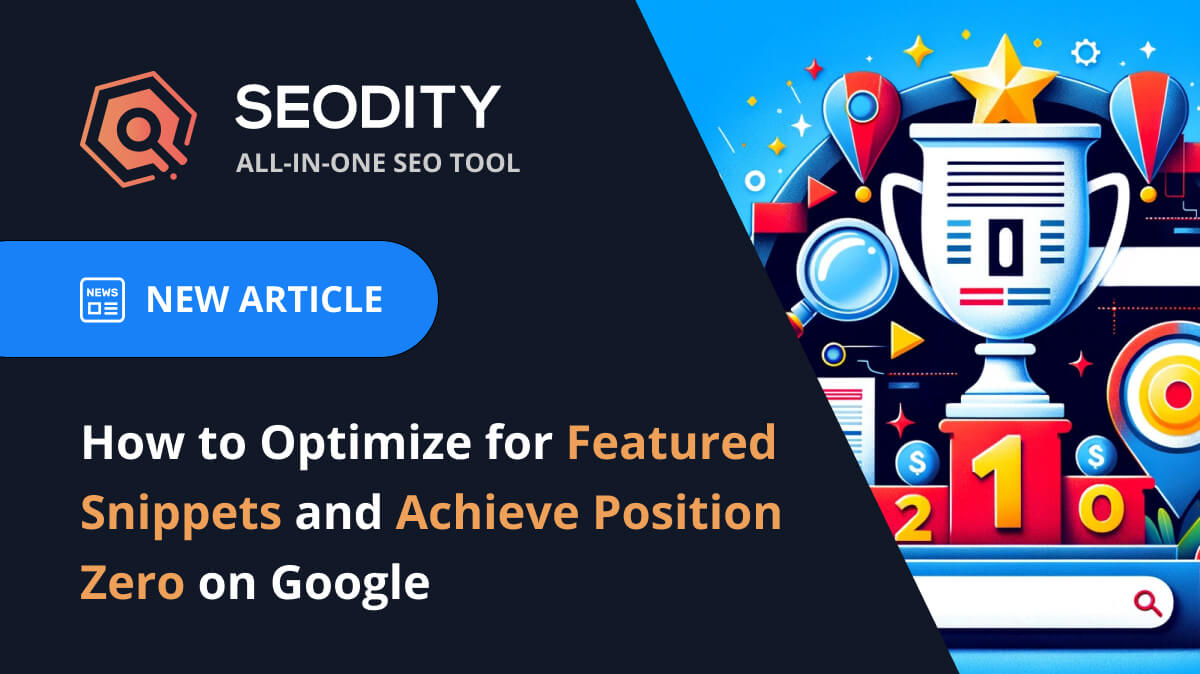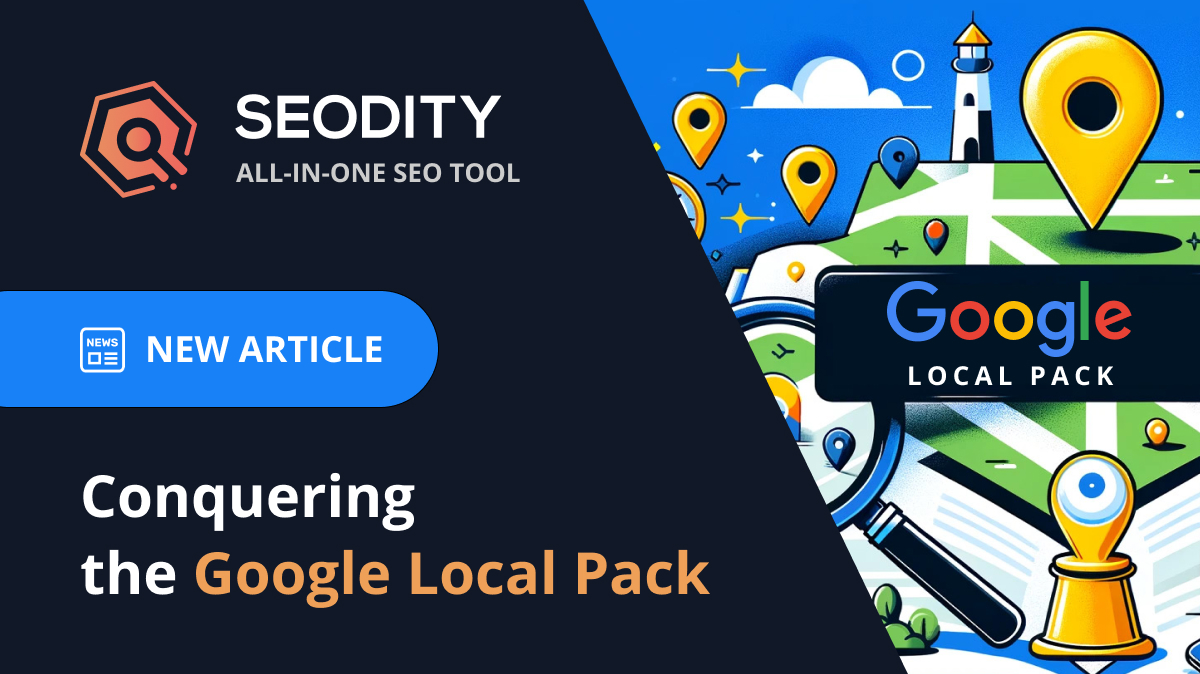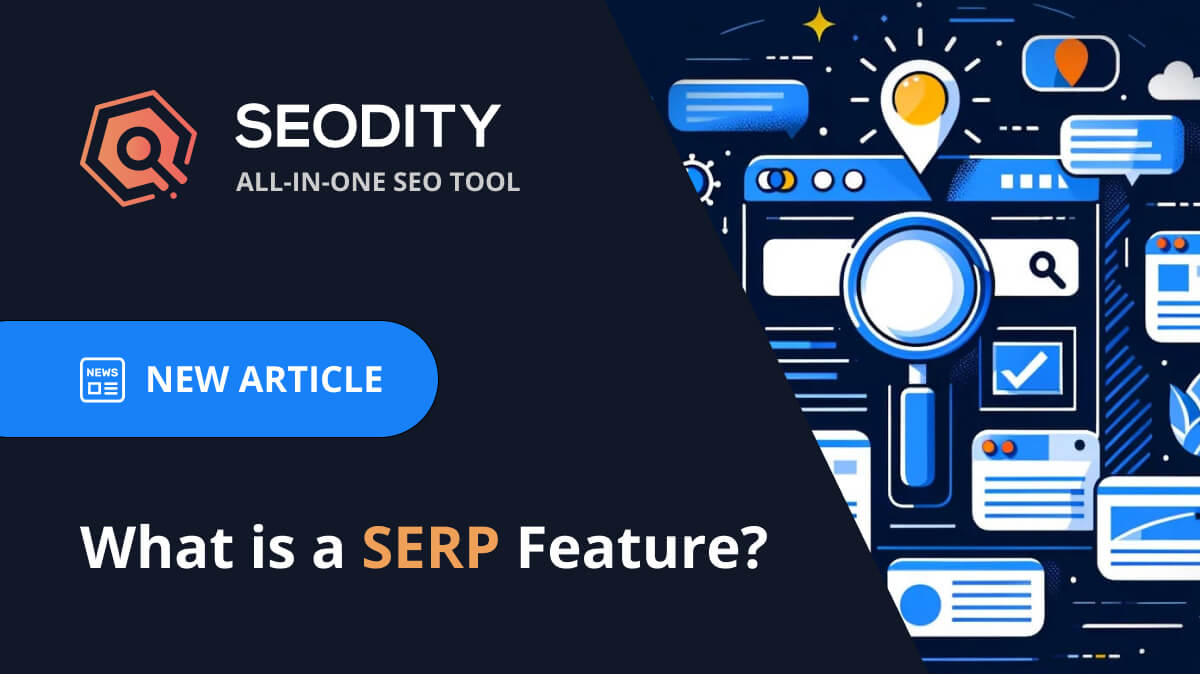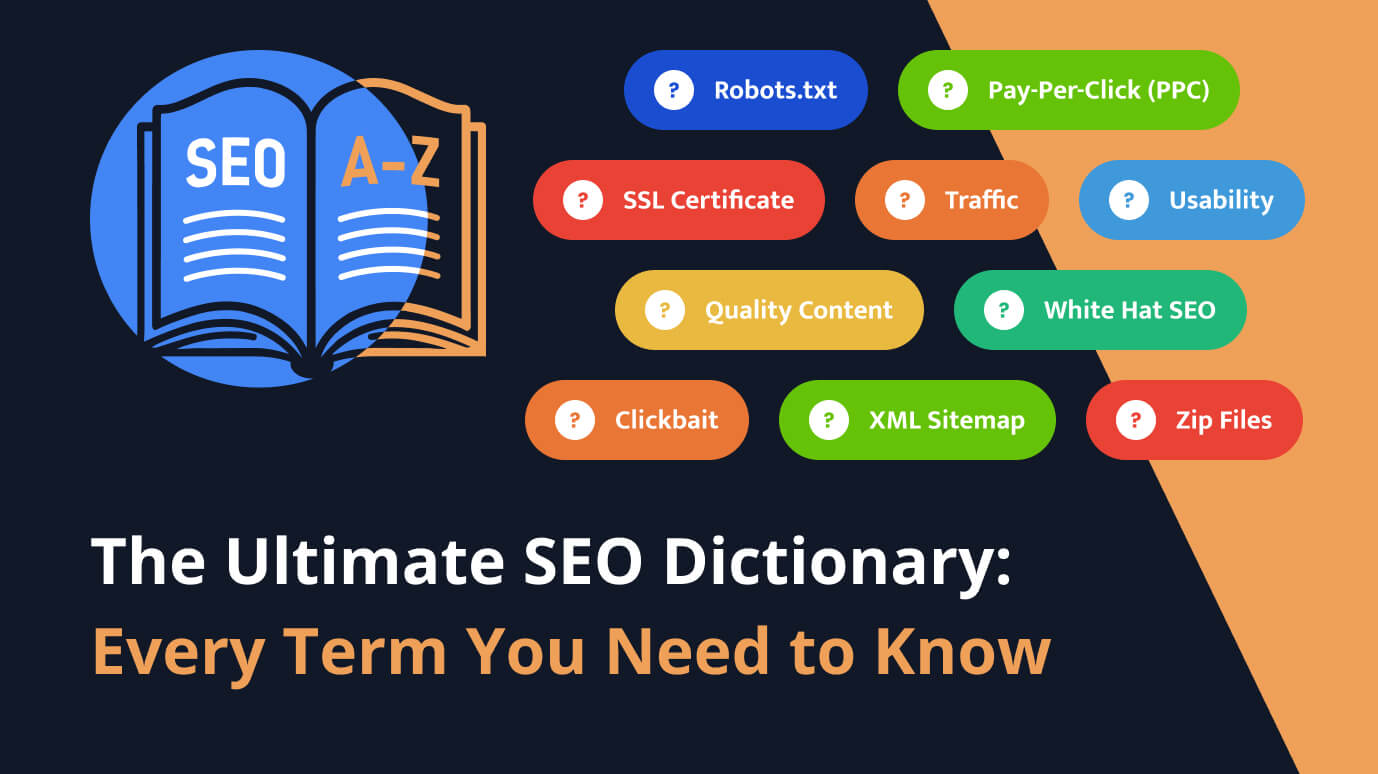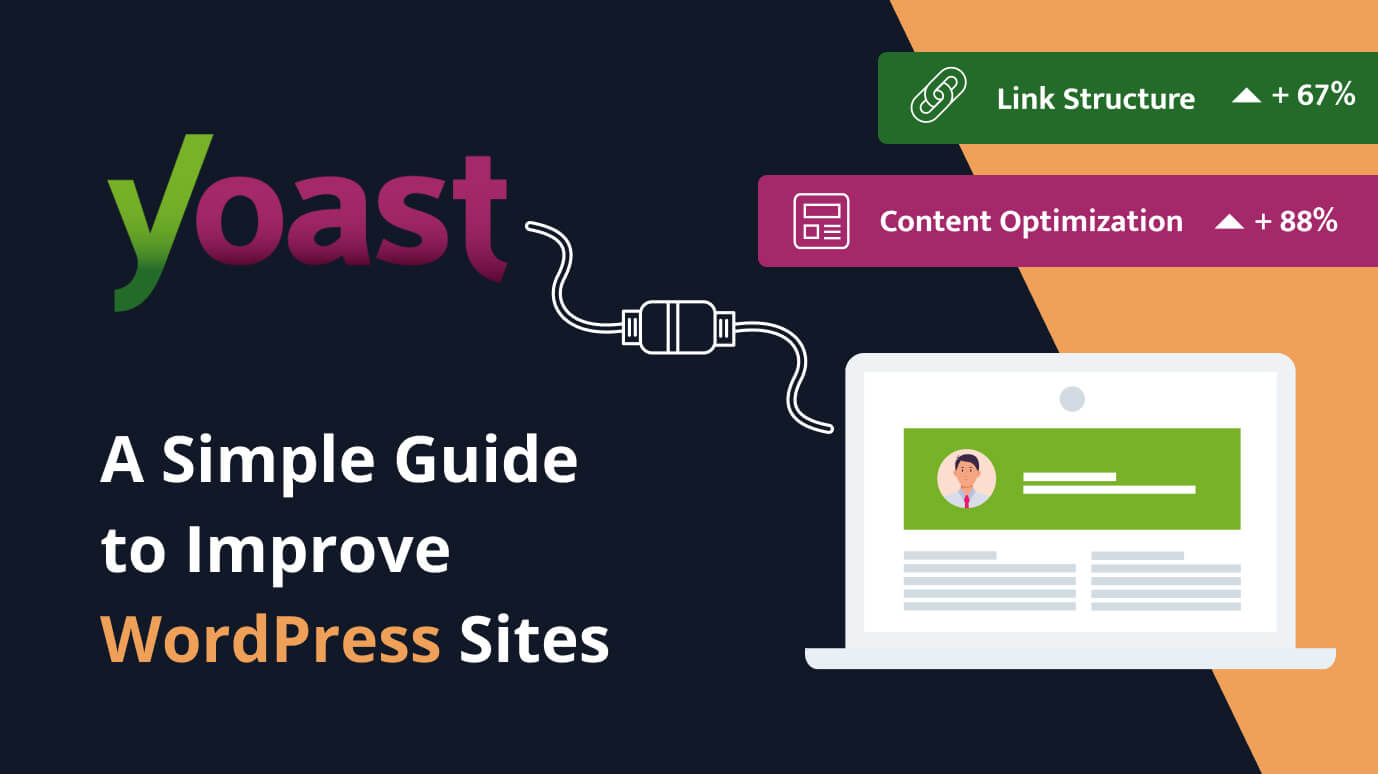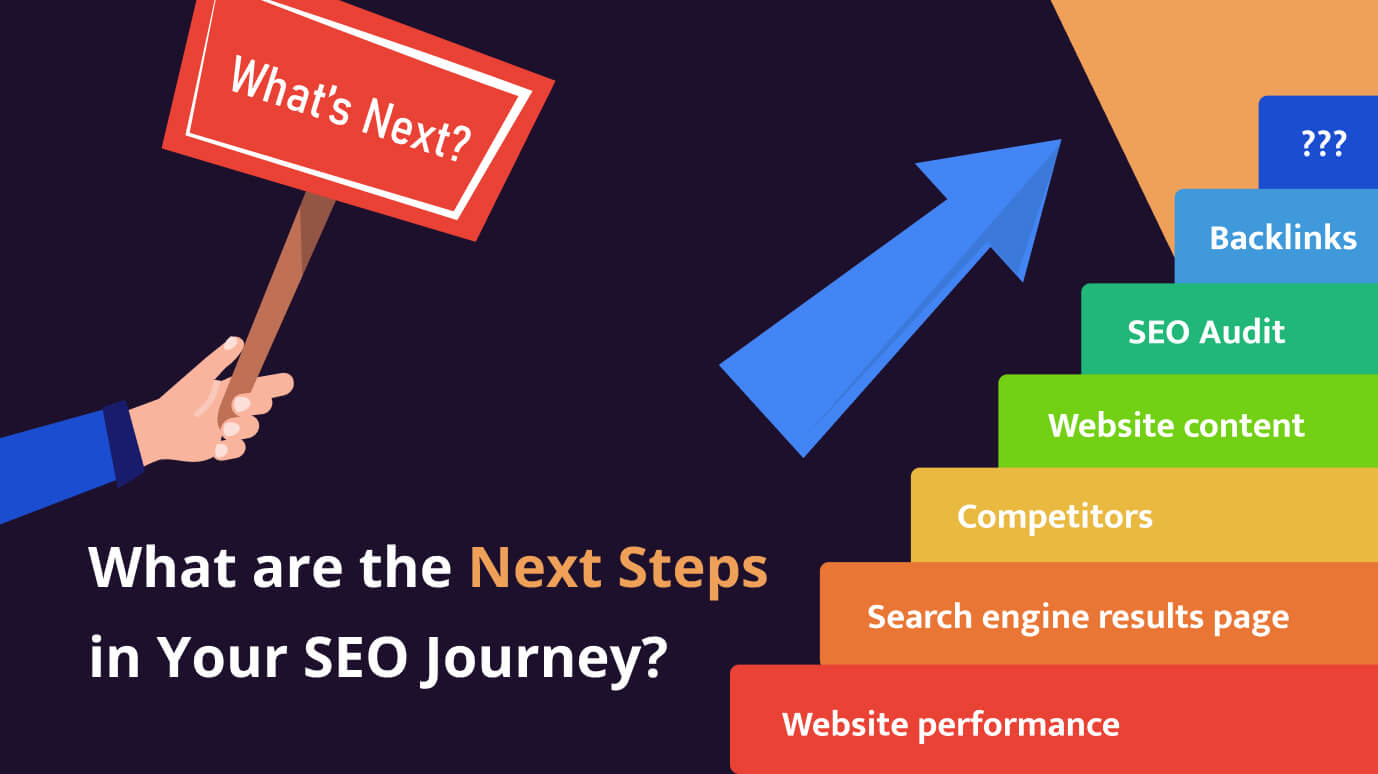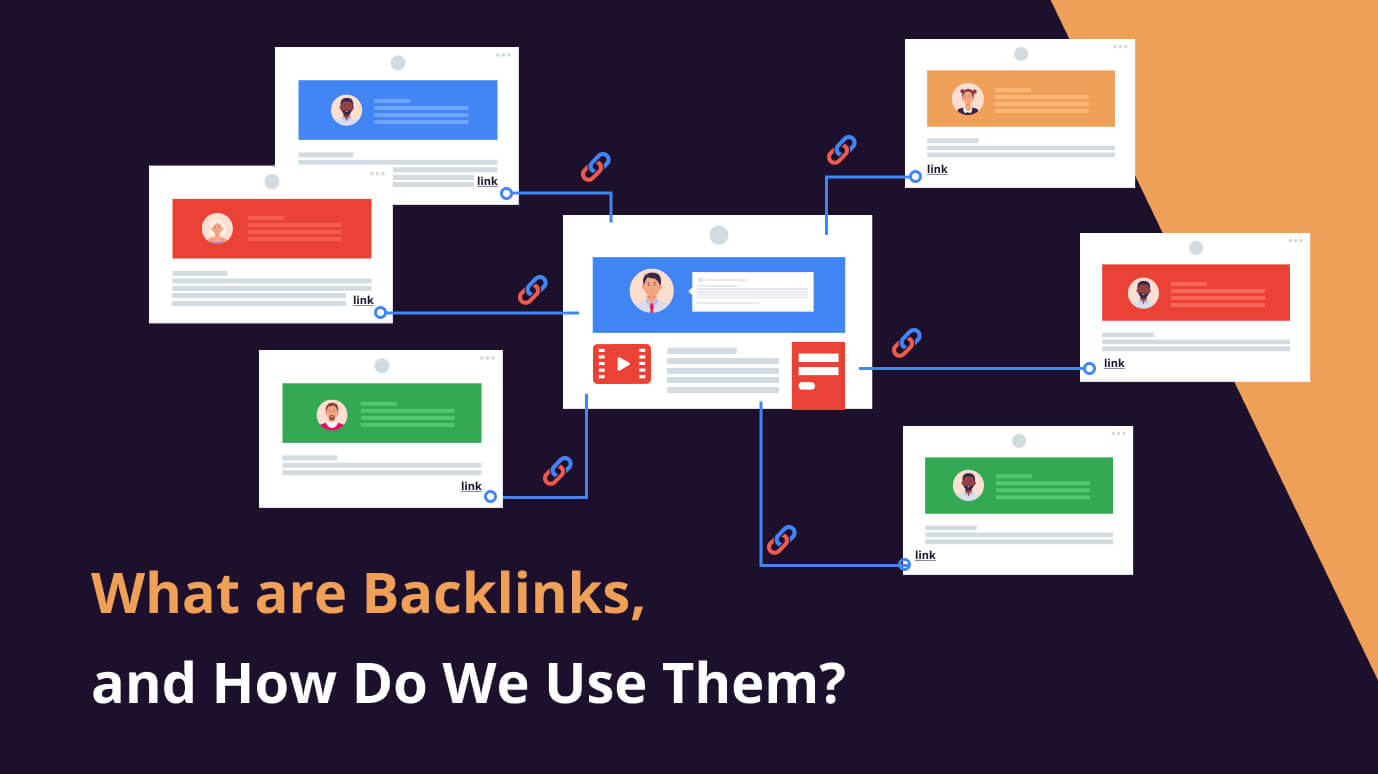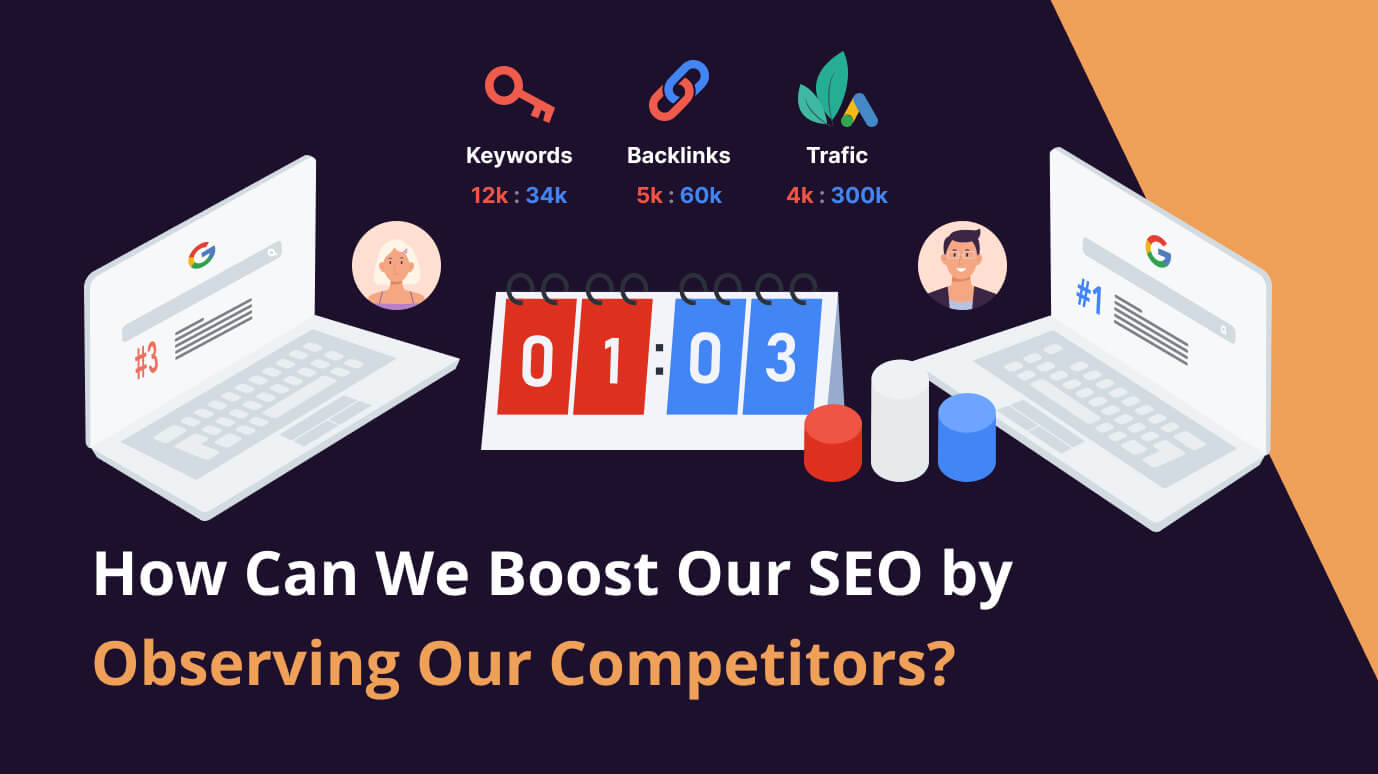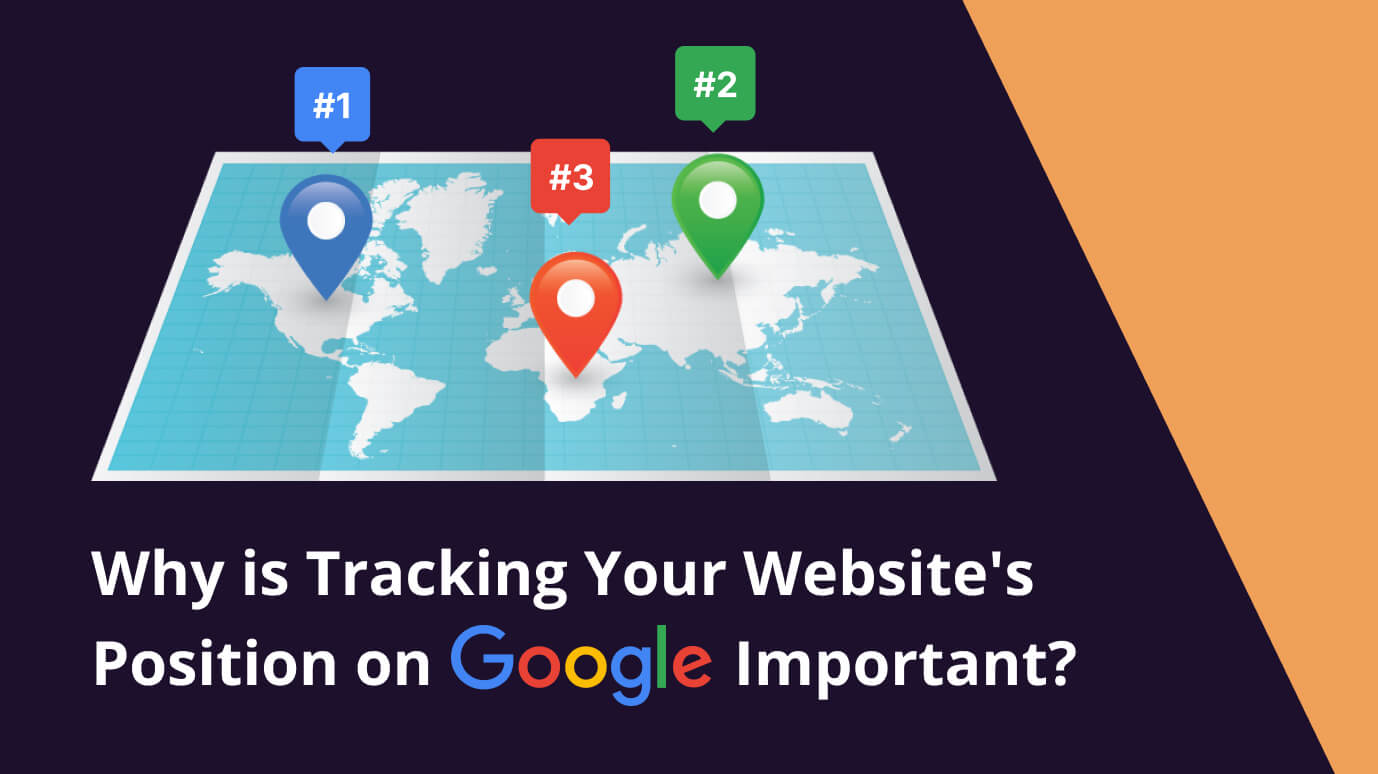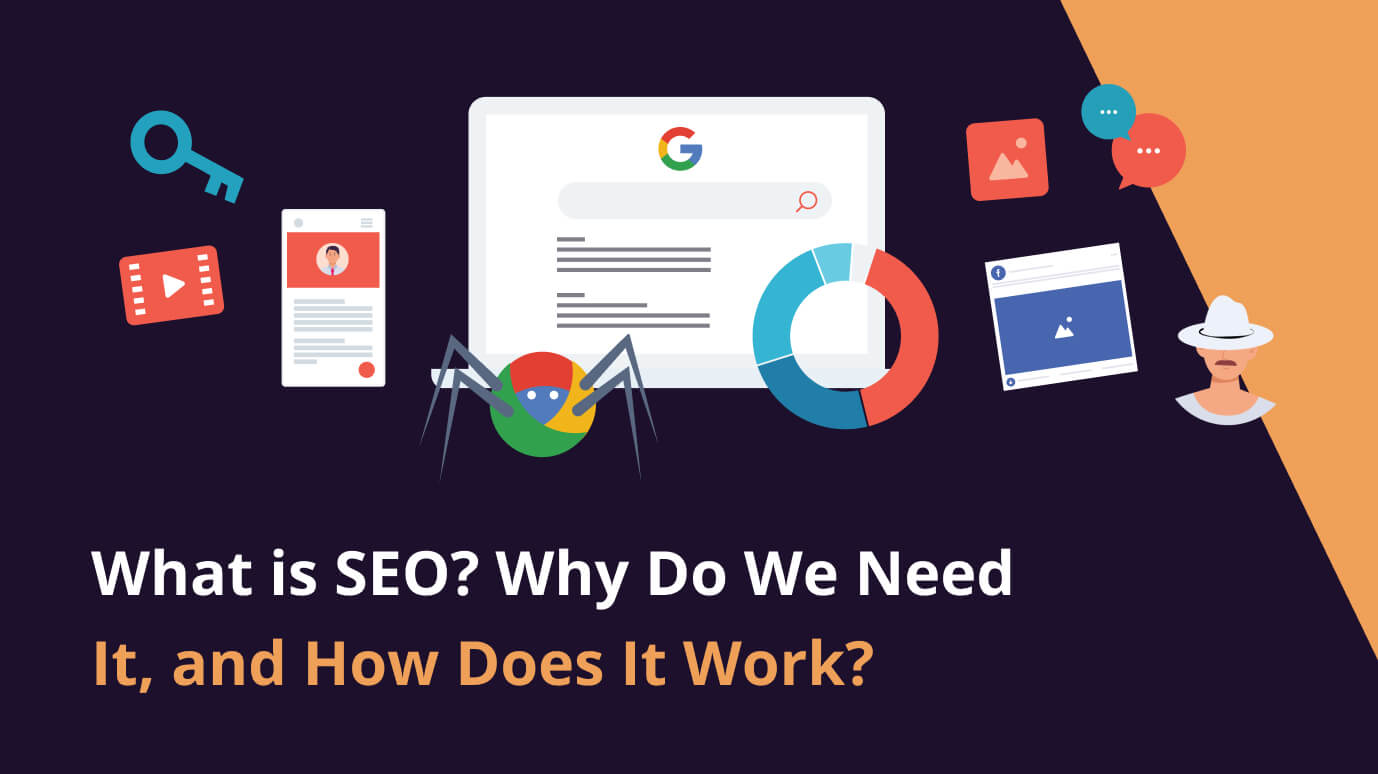
 3 min read
3 min readOn-Site Audit: The Importance of Checking Your Website’s Health and Speed
This article is part of our beginner's series on SEO. If you missed the first part, you can read "Getting Started with SEO: A Beginner's Guide" here.
Introduction
Your website's health and speed are crucial for good online ranking. An in-depth site audit can improve user experience and boost your website's visibility.
This article shows how to generate an On-Site Audit using Seodity, and what you can do to fix any technical errors found.
Creating Website Audit
First, you need to have a project created for your website. If you don't have a project, follow the steps in our documentation to create a new one here.
After going to your project, follow these steps:
- Go to On-Site module
- Now, you need to verify website ownership. If you encounter any problems, please refer to the documentation on how to accomplish this here.
- After verifying ownership, you will need to wait for some time as Seodity will crawl your entire website and identify technical issues. The duration of this process can vary based on the size of your website. You will receive an email once the process is completed.
- That's it! Your website audit is complete and ready for analysis.
Fixing Audit Issues
Once your audit is completed, you will see a list of issues that Seodity has identified following the analysis.
These are categorized by their severity - you will notice errors, warnings, and information. It is best to prioritize errors, as they have the most significant impact on your SEO.
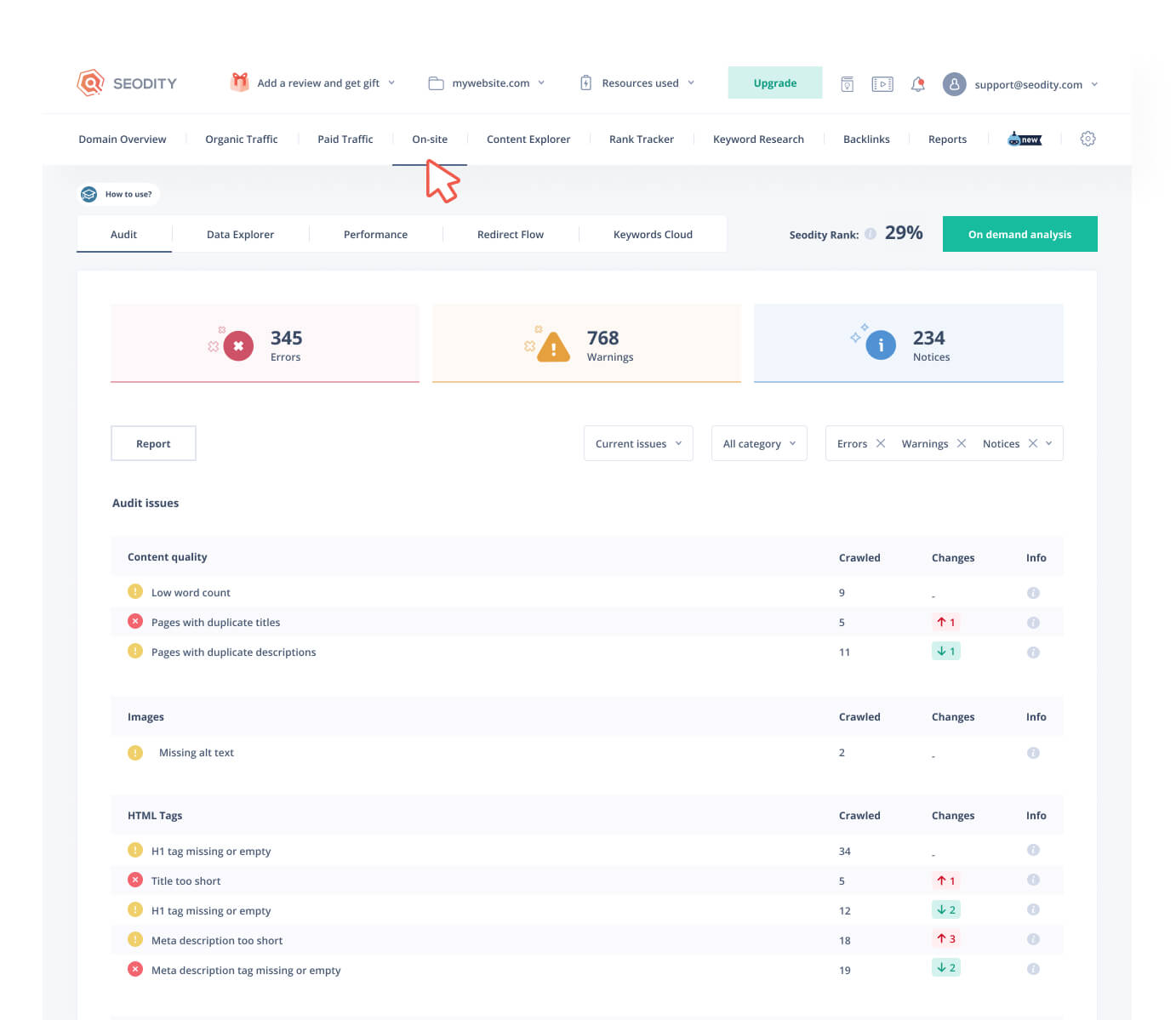
How to fix them? The solution depends on the specific issue. If you click on the "Info" icon, located on the right side of the row, more information about the issue will be revealed. You will also receive detailed instructions on how to resolve the given issue.
After clicking on the entire row or the "Show affected pages in the Explorer" button, you'll be redirected to the Data Explorer tab with filters applied specifically for this issue.
You have the option to fix these pages yourself or delegate the task to the person responsible for your website development.
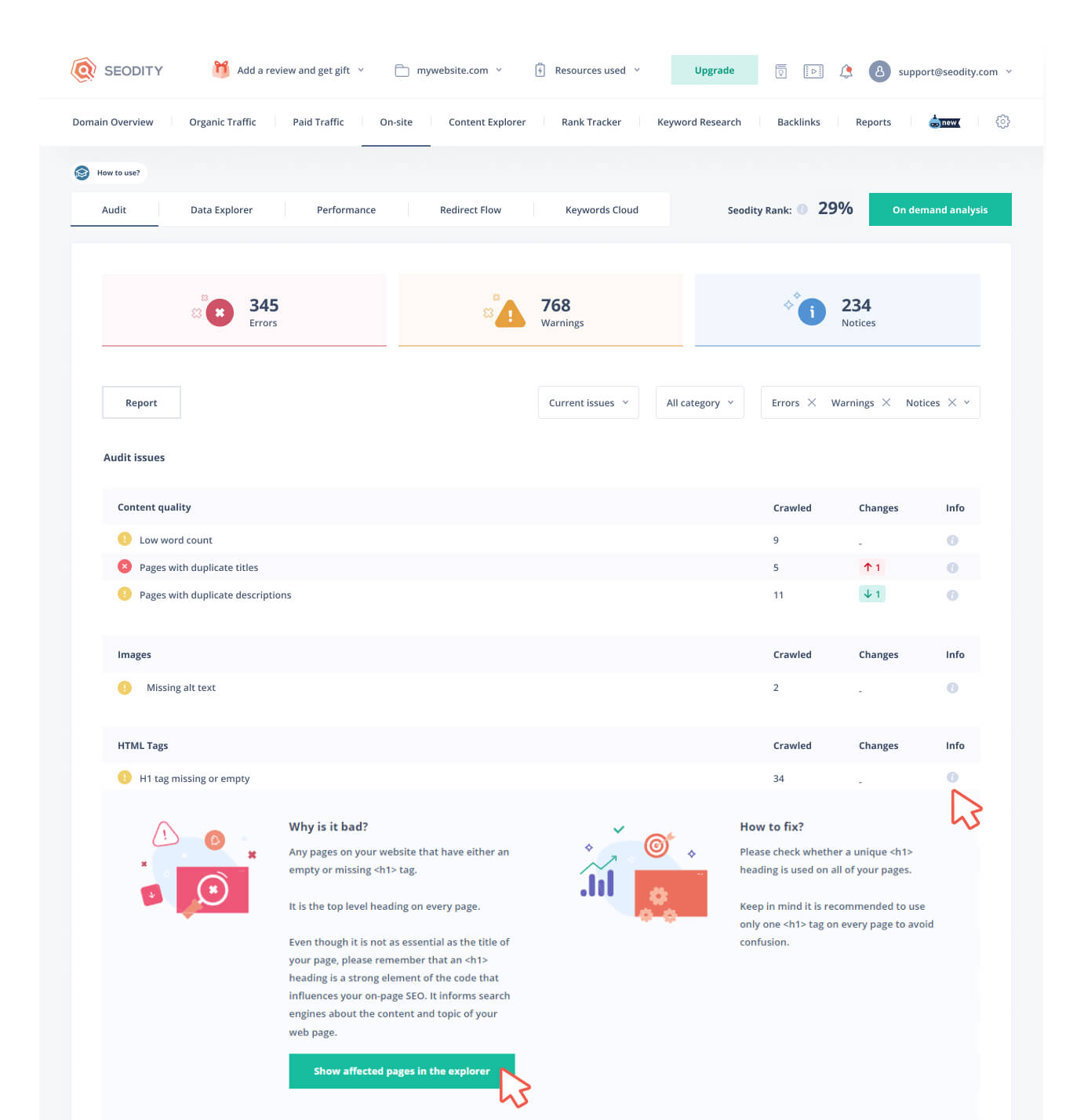
More in-depth analysis using Data Explorer
We've learned how to identify webpages that have issues. But what if we want to analyze a particular webpage, its external and internal links, and how the social preview of that website would appear, among other data? You can certainly do that too!
To view information about a specific webpage:
1. Navigate to the On-Site module and then click on the "Data Explorer" tab.
2. You can filter webpages here to find what you're looking for.
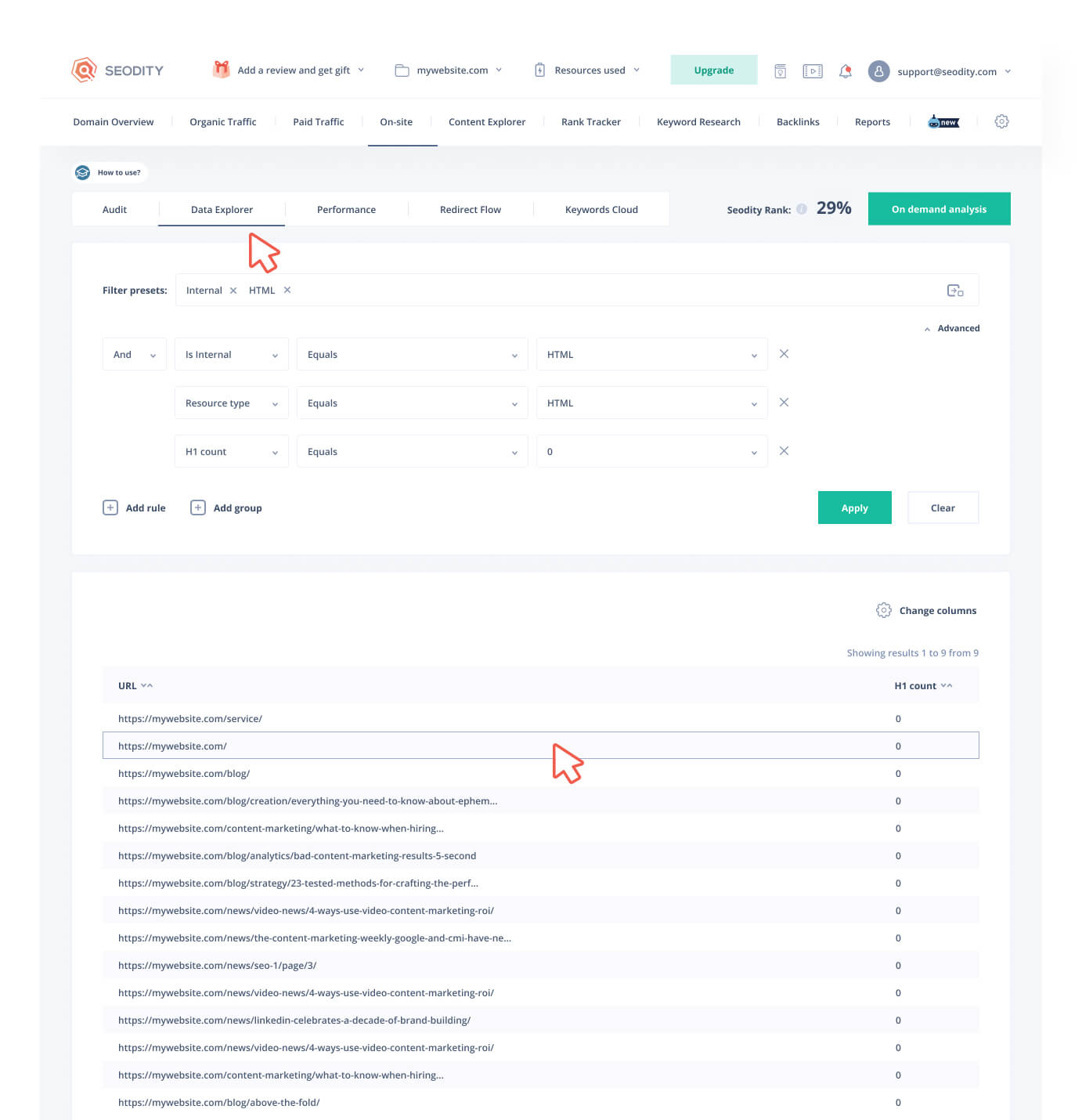
3. After you've located the specific webpage from which you want to view all data, click on the webpage row in the table. This action will reveal a modal displaying external/internal links of the webpage, social metadata, and other useful information.
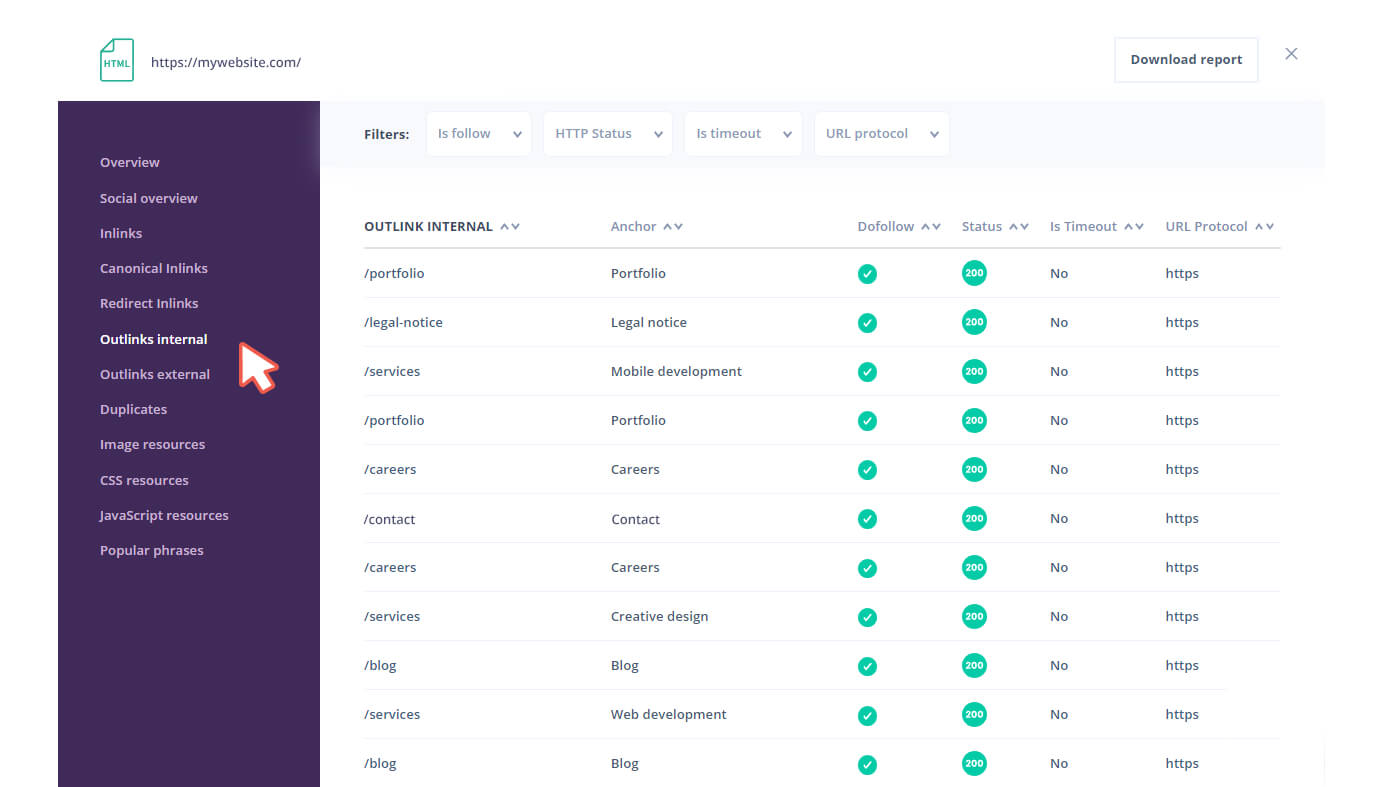
Performance monitoring using Google Lighthouse
If you're interested in your website's performance, you can examine it using our Google Lighthouse analysis.
- Navigate to the On-Site module and select the "Performance" tab.
- After a while, you should see the results of your website's Google Lighthouse analysis.
This resource is incredibly useful for identifying site-wide performance issues. For instance, it can measure how long your website takes to load and how long it takes for a user to interact with it. It also provides insights on how to solve these problems, pinpointing areas that require modification, such as enabling text compression or breaking down your JavaScript code into smaller segments.
Conclusion
It's important to regularly check your website's health, speed, and performance. It locates problems and gives easy-to-understand solutions, improving SEO, visibility, and user experience. Fixing these issues is essential for SEO.
Use Data Explorer for a detailed analysis and Google Lighthouse to monitor performance. Be active and use these tools to keep your site running smoothly. Always strive to improve your site for the best user experience.
In the next article, we'll dive into the world of backlinks: what they are and how to use them. This simple tool can make your website more popular and easier to find. Don't miss out on learning how to use backlinks to your advantage! Click here to read it.

Co-founder of Seodity
.svg)
